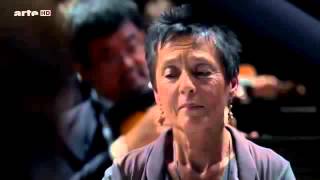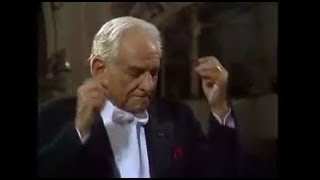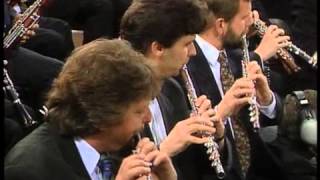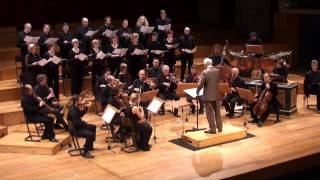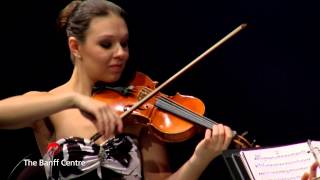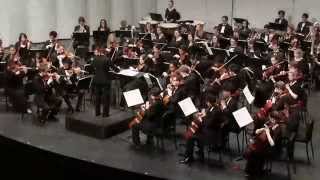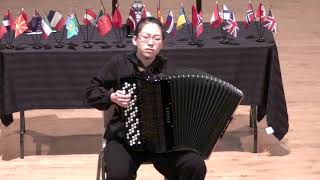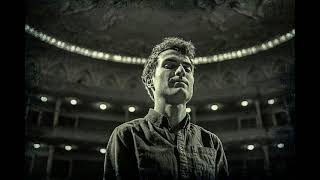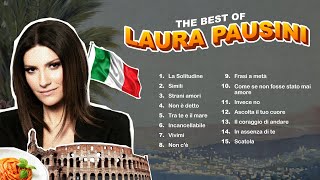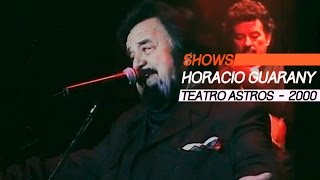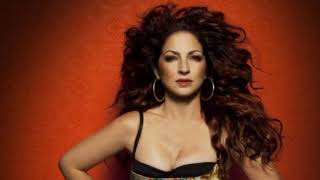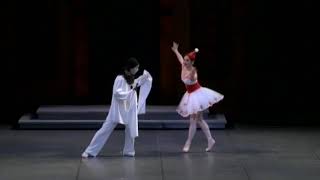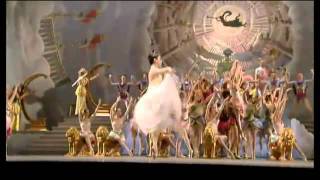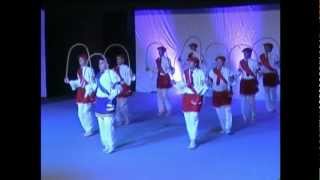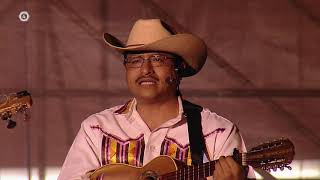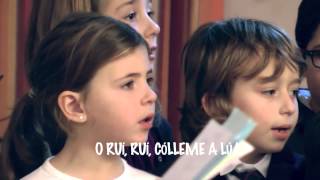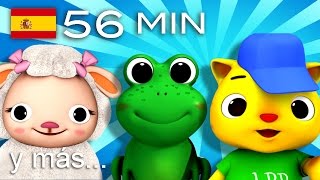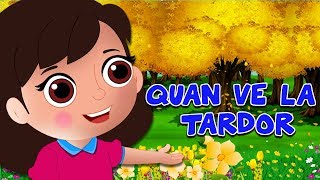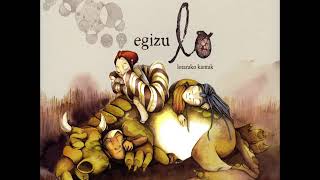Recommended music videos for initiation to classical music
Johann Sebastian Bach (1685-1750) was a German violinist, organist, conductor and composer; He was born in Eisenach into the most prominent musical family in history with more than 30 famous composers within it. In 1703 he obtained his first job as a court musician for the Prince of Arndstat and in 1707 he moved to Mülhausen as an organist, where he married his cousin Maria Barbara with whom he had seven children. After the death of his wife in 1720, he remarried after a year and a half to María Magdalena with whom he would have another thirteen children. In 1723 he moved to Leipzig where he would live until his death at the age of 65. A prolific composer, he is considered one of the main three geniuses in the History of Music along with Mozart and Beethoven.
The catalog of Bach's works or Bach-Werke-Verzeichnis , better known by its acronym BWV , consists of a numbered index of all the composer's works arranged thematically by type of work, genres and according to their vocal or instrumental nature and used by academics and musicians from around the world. This catalog was created in 1950 by the German musicologist Wolfgang Schmieder .
The Harpsichord Concertos , BWV 1052-1065 are a series of works written for harpsichord, strings and basso continuo by Johann Sebastian Bach . There are seven complete concertos for solo harpsichord (BWV 1052 to 1058), three concertos for two harpsichords (BWV 1060 to 1062), two concertos for triple harpsichord (BWV 1063 to 1064), and one concerto for four harpsichords (BWV 1065).
Today we offer the Second Movement, Largo, of the Concerto No.5 In F-Minor for Harpsichord and Strings (Bwv 1056) performed by the distinguished Portuguese pianist Maria João Pires accompanied by the Paris Orchestra conducted by the Italian maestro Riccardo Chailly .
Wolfgang Amadeus Mozart (1756-1791) is considered one of the three giants of musical composition along with Bach and Beethoven . Child prodigy born in Salzburg (Austria), at the age of six he mastered the keyboard and violin and began to compose. His father, Leopold, showed him off on exhausting tours of different European courts. Prolific composer (more than 600 works written from the time he was five years old until his death) he cultivated all types of musical genres: piano works, chamber music, symphonies, concert works, choral works, operas... each and every one of them, masterpieces of its gender. His operas The Magic Flute, Don Giovanni, Cosí fan Tutte, and The Marriage of Figaro are among the 10 most performed operas in the world. He died in Vienna at the age of 35.
The catalog of Mozart's works or Köchel Catalog ( Köchel Verzeichnis, in German) was created by Ludwig von Köchel in 1862 and lists the musical works composed by Wolfgang Amadeus Mozart . Each of Mozart 's works is designated by a number preceded by the abbreviation K. or KV ; number that designates the chronological order of its creation and that is actually valid for most of the works, although some works by other authors appear erroneously attributed to Mozart , and omits other authentic ones that had not yet been discovered.
Ave verum corpus is a small musical motet composed by Wolfgang Amadeus Mozart on the short Eucharistic hymn of the same name dating from the 14th century and attributed to Pope Innocent VI . It is numbered KV618 according to the numbering of the Köchel Catalog of Mozart 's works. The motet, written for choir, strings and organ, was composed for the festival of Corpus Christi and finished its composition in Salzburg on June 18, 1791 (the year of his death).
Today it is offered to us by the Bavarian Radio Choir and Orchestra conducted by the American teacher Leonard Bernstein .
The Guitar is a plucked string instrument, unlike the piano, which has a struck string , or the violin, which has a bowed string . After centuries of evolution, the current guitar is made up of the sound box that has a large hole or mouth at the top, the neck that is covered by the six strings that go from the bridge to the headstock whose pegs are used to tune the strings. ; On the other hand, the neck is covered by a piece of wood that is the fingerboard divided into frets that divide the strings into halftones. The origin of the guitar dates back to 1000 years BC where the Assyrians already had plucked string instruments with a sound box. The six-string guitar was introduced in the 18th century by Jacob Otto with the current tuning.
Kaori Muraji (1978) is a Japanese guitarist who started playing the guitar at the age of 3. She was first taught by her father and from the age of ten by guitarist Shinichi Fukuda . In the early 1990s he won several guitar competitions in Japan and in 1993 gave his debut recital at Tsuda Hall . In the same year he published his first album and in the following year he debuted as a soloist with the Japan Philharmonic Orchestra . In 1997 he moved to Europe to study with Alberto Ponce at the Ecole Normale de Musique in Paris . After his graduation in 1999, he returned to Japan . Today it offers us a compendium of works for guitar by composers of all styles and eras.
Bedrich Smetana (1824-1884) was a composer born in Bohemia , a region that today belongs to Czechia , where he is recognized as the father of Czech music and who is internationally known for his opera The Sold Bride and for the cycle of symphonic poems Má vlast ('My country'). From 1866 to 1874 he headed the new Prague Provisional Theater facing opposition due to Smetana 's alignment with the progressive ideas of Franz Liszt and Richard Wagner . At 50 years of age he became completely deaf; But, released from his theater duties, he began a period of constant composition until a mental collapse in early 1884 led to his confinement in an asylum and his subsequent death .
The Sold Bride is a comic opera in three acts with music by Smetana and a Czech libretto by Karel Sabina . The opera tells the story of how true love prevails over the combined efforts of ambitious parents and a scheming matchmaker. The opera was not an immediate success, and was revised and expanded over the next four years. In its final version, released in 1870, it quickly gained popularity and eventually became a worldwide success. Today we can see his Overture conducted by the Latvian maestro Mariss Jansons (1943-2019), a conductor who during his lifetime directed some of the most important European orchestras, in addition to the Vienna New Year's Concert . in 2006, 2012 and 2016.
Recommended classical music videos
Christoph Graupner (1683 - 1760) was a prolific German composer, famous for the excellent calligraphy of his autographs and copies. He was a lively, passionate, cultured man with great professional experience who stood out for his level of invention and originality in his compositions. He was one of the most esteemed composers of his time, like his contemporaries Handel and Telemann . He is also a contemporary of Johann Sebastian Bach , and a friend of other renowned masters, such as Heinichen and Fasch . He concludes his studies in Leipzig with Johann Kuhnau , Bach 's predecessor at the Church of Saint Thomas . In 1705 he was appointed harpsichordist of the Hamburg Opera orchestra, directed by Reinhard Keizer and in which Händel was a violinist of that same orchestra.
The Cantata , in its origin, is a musical piece written to be “sung” by one or more solo voices with instrumental accompaniment and generally articulated by several movements and sometimes, with a choir. The oldest type of cantata , known as cantata da camera , was born towards the end of the 17th century , composed for solo voice over a secular text, while the religious cantata was created for religious rites. These cantatas were generally articulated with an initial chorus in which the sopranos began the musical theme, completed by a succession of arias , recitatives and chorales , sometimes with passages of solo instruments that played the melody prepared for the voice. The fundamental difference with oratory is that it has an argument that supports it.
Franz Joseph Haydn (1732-1809), Austrian composer whose brother Michael Haydn was also a notable composer, was one of the main pillars on which classicism (1750-1810) was based. At six years of age he began his studies of harpsichord and violin. At the age of eight he was admitted as a choralist at St. Stephen's Cathedral in Vienna where he continued his musical studies. After changing his voice, he had to survive by working multiple jobs, while studying composition analyzing the works of Carl Philipp Emanuel Bach . He maintained a close friendship with Mozart and was Beethoven 's teacher. He laid the main foundations of the sonata form and the formal structure of the string quartet and the symphony. He died at the age of 77 in Vienna .
The catalog of Haydn's works . The works of Joseph Haydn are today classified according to the system created by Anthony van Hoboken and revised and completed by Robbins Landon and his wife Christa , which has been universally adopted, although it is now known that it does not accurately reflect the chronology and composition of the works. works, criteria used by Hoboken in the catalog. Each work is identified with a Roman numeral that corresponds to the category, which in most cases corresponds to a genre. Some categories have subdivisions, which are indicated with a lowercase letter and then an Arabic number appears that corresponds to the order of the specific work within the category. These figures are preceded by the word Hoboken (in memory of the catalog's author) and sometimes by Hob .
The Emperor Quartet is the third of six string quartets that together constitute the last complete set of Haydn quartets and is the one that provided the melody for the national anthems of Austria (1797-1918) and Germany (from 1922). The work gets its nickname from that melody, composed specifically for the Austrian monarchy and therefore known as the “ Emperor's Hymn ”, which forms the basis of its second movement.
Its FIRST MOVEMENT (0´58´´), “Allegro”, is written in sonata form (exposition-development-reexposition). The SECOND MOVEMENT (8´32´´), “Poco adagio, cantabile” uses the elegant “Hymn of the Emperor” as a basis for the variations. The THIRD MOVEMENT (16'02''), “Menuetto allegro”, is a dance form. The quartet closes with its FOURTH MOVEMENT (20´47´´) “Finale: presto”, sometimes strident, sometimes melodious, but invariably dramatic, again in sonata form. ( Extracted from the Encyclopedia Britannica article )
Today it is offered to us by the Attacca Quartet .
Johannes Brahms (1833-1897), born in Vienna , where he spent most of his life, was the composer of the most conservative romanticism compared to the progressive current led by Liszt and Wagner . His music is firmly rooted in the compositional structures and techniques of the classical masters and his formal structures faithfully follow the patterns of classicism , although he uses some of the color of romanticism and popular music. Eminently perfectionist in nature, he wrote for piano, chamber ensembles, symphony orchestra, for solo voices and for choir. It was Hans von Bulow who proposed the “three Bs” referring to Bach , Beethoven and Brahms as the three main pillars of the History of music.
Catalog of Brahms' works . His works are classified by their Opus number ( from the Latin opus 'work'; op. abbreviation) which is a term used in music to catalog the works of most composers since the 17th century .
Overture is the instrumental introduction to an opera or other dramatic work, musical or not; although some independent instrumental compositions of the 19th and 20th centuries were also called overtures by their composers. The first operas dating from the beginning of the 17th century did not have overtures but did have an introduction made by the vocalists in which they summarized the action that was going to take place immediately afterwards. Instrumental introductions came into regular use in the mid- 17th century ; German composer Christoph Willibald Gluck was one of the first to use material from his operas for overtures. In this way, these established the emotional profile of the opera that followed.
Akademische Festouvertüre op. 80 (Academic Festival Overture) is a concert overture composed by Johannes Brahms and dates, like the other one he composed, the Tragic Overture , from 1880; Likewise, it was premiered on January 4, 1881 in Wrocław under the direction of the composer. The piece was written in 1879 as a thank you to the Breslau University of Philosophy after being named an honorary doctor. Thus, the Overture of the academic festival is a kind of fantasy in which it uses a dozen different motifs, among them four student songs: Wir hatten gebaut ein stattiches Haus, Melodie des Landesvaters, Was kimmt dort von der Höh and above all the famous Gaudeamus igitur , who ends the work with a jocular solemnity.
Today it is offered to us by the Interlochen Arts Academy Orchestra conducted by Australian teacher Carolyn Watson .
Franck Angelis (1962) is a French composer who won several international accordion competitions, such as The Grand Prix in 1979 and the Trofée Mondiale in 1981. Franck 's reputation as a composer of modern accordion literature began when his composition " Boite à Rythme " was performed and won at the international accordion competition in Klingenthal, Germany . Angelis ' compositions require technical virtuosity, great expressiveness and sensitivity of the performer; His works show the creative genius and art of their composer and his compositions are part of the programs of the greatest international accordionists. ( Accordionworld )
The accordion is a harmonic wind musical instrument, consisting of a bellows, a tuning fork and two wooden sound boxes. At both ends the bellows is closed by wooden boxes. The right-hand part of the accordion additionally has a fingerboard with an arrangement of keys that can be piano-like ( piano accordion ) or round keys (also called buttons ); The left hand part has buttons on both types of accordion for playing bass and accompaniment chords.
Tian Jianan was born in China in 1994 and studied accordion at the Central Conservatory of Music in Tianjin (China) with Professor Cao Xiaoqing and composition with Professors Zhuhe and Chen Xinruo . He has given concerts in Italy, Germany, Russia, Canada, USA, Euskal Herria (Basque Country) and New Zealand . He has obtained excellent results in international competitions, including the first prize obtained in the Arrasate Hiria International Competition (2016). Likewise, it has obtained 31 first prizes in national competitions in different categories. He has published five albums, one of them in chamber music.
Recommended music videos for all tastes
Tigran Hamasyan (1987) is an Armenian jazz pianist. He plays mostly original compositions that are heavily influenced by Armenian folk tradition, often even using its scales. In addition to the influence of Armenian popular music on Tigran 's compositions, he is also greatly influenced by American jazz traditions and, to a certain extent, as on his solo album, Red Hail , also by progressive rock and classical music. Armenian folklore. Even in his most overt jazz compositions and performances of renowned jazz themes, his improvisations often contain embellishments based on Armenian and Middle Eastern scales.
Laura Pausini (1974) is an Italian singer-songwriter born in Faenza , Ravenna, winner of multiple international awards. He lived and grew up in Solarolo until beginning his professional career, moving to Milan . Her career is distinguished by singing in languages other than Italian, such as Spanish, Portuguese, English, French, Sicilian, Neapolitan, Catalan and even Latin. Their albums have had commercial success mainly in Europe, Latin America and Asia . She is considered the most successful and world-known Italian singer-songwriter, with fifteen studio albums on the market and estimated sales until 2016 of more than 75 million records, which also makes her one of the artists with the largest number of albums. sales in the world.
Horacio Guarany (1925-2017) was an Argentine singer, composer and writer, winner of the Konex Platinum Award in 1985 as the most important male folklore singer in the history of Argentina . As a child he liked music, singing, and learned to play guitar with the maestro Santiago Aicardi . He began with the Herminio Giménez Orchestra . In 1957 he debuted on Radio Belgrano in Buenos Aires ; He pioneered the Cosquín National Festival in 1961 and was a classic, year after year. In 1972 he filmed his first feature film Si se calla el cantor with Olga Zubarry . During 1974 he was ordered by the military dictatorship to leave the country within 48 hours. In 2013 he received an award from the Argentine National Congress. On Friday, January 13, 2017, he died at the age of 91.
Gloria Estefan (1957) is a Cuban-American singer-songwriter, actress and businesswoman. Throughout her career, Gloria has sold more than 120 million records worldwide, 31.5 million of them in the USA , making her one of the best-selling musical artists of all time. Considered the "Mother of Latin Pop", Estefan has won multiple awards and recognitions; among them, seven Grammy Awards. He has a star on the Hollywood Walk of Fame .
Recommended peculiar videos
Riccardo Drigo (1846-1930) was an Italian conductor and composer born in Padua . After achieving some notoriety as both a director and composer, he moved to Saint Petersburg where he directed various operas and ballets. He remained in Russia for 40 years writing different operas and ballets in collaboration with notable choreographers such as Marius Petipa , Lev Ivanov and Michel Fokine with whom he would collaborate closely.
Marius Petipa (1818-1910) was a French choreographer, ballet master and dancer, based in imperial Russia ; With him the era of romantic ballet ended to inaugurate that of the grand Russian ballet. His notable works include Swan Lake, Sleeping Beauty, The Nutcracker, Raymonda, Don Quixote, Paquita and La Bayadera .
Les Millions d'Arléquin. It is a ballet created in 1900 by Marius Petipa to music by Riccardo Drigo . In it, Columbine , Cassandre 's daughter, is in love with Harlequin , but her father has other plans. Her choice of groom for Columbine is the rich old Lèandre , but with Harlequin always nearby, Cassandre and his servant Pierrot must be on guard to keep the lovers apart. However, Pierrette , Pierrot 's wife, sympathizes with the couple and thwarts the plans of her husband and his master. In the end, love triumphs when the Good Fairy helps Harlequin by presenting him with a magical buffoonery that grants all his wishes.
Today we present the version offered by the Maracay Opera Theater Ballet School
Romualdo Marenco (1841-1907) was an Italian composer known primarily for his ballet music. Marenco began his musical career as a violinist at the Teatro Doria in Genoa . His first composition was the ballet Garibaldi's Landing in Marsala . He was appointed conductor of La Scala in Milan and also directed its ballet company for seven years. His best-known ballets were written in collaboration with choreographer Luigi Manzotti during that period; He is best remembered for the ballet Excelsior , composed in 1881.
The Excelsior Ballet is a tribute to the scientific and industrial progress made throughout the 19th century , from the electric light to the telegraph, the steam engine, the Fréjus railway tunnel and the Suez Canal . As such, it foreshadows the futurist movement. In the first nine months, it was performed 100 times in Italy and abroad.
The Galop (a word that comes from “gallop”) is a dance with happy and light music originally from France and from the countryside. Today we offer the Galop Excelsior that is part of Marenco 's Ballet Excelsior in interpretation of the Corps de Dance of the La Scala Theater Ballet in Milan .
Oñatiko Arku dantza The most important festival in Oñati , Gipuzkoa, is Corpus Christi . In the morning, after the High Mass , a procession takes place with the sacred characters and the dancers, who dance again in the afternoon. One of the dances is the Arku Dantza (Bow Dance) ( Extracted from the bottom of this video )
Today we offer it through the Itxas Alde Dantza Taldea group.
Huapango is a Mexican musical genre based on ternary rhythm, performed in various ways, the best known are three variants: the typical huapango or huasteco son , performed by the huasteco trio; the huapango norteño , performed by Conjunto Norteño and the huapango by mariachi . The word huapango seems to be derived from the Nahuatl word 'cuauhpanco', from cuahuitl, firewood or tree, bread and both locative suffixes that make the first word a locative. That is to say, in short, on the stage or on the platform . (26-5-24)
Today we present Huapango by José Pablo Moncayo (1912-1958), Mexican composer, who was a student of Carlos Chávez . His Huapango , written at the age of 29, has been such a success from then to the present day that it has eclipsed the rest of his works, both chamber and symphonic; It was released in 1941 and is strongly associated with the nationalist cultural and audiovisual production of Mexico , to such an extent that it has been called the second Mexican National Anthem.
Today we offer it in interpretation of the Amalia Hernández Ballet (or Ballet Folklorico de México ) founded in 1952; ballet that has been a benchmark of traditional Mexican music and dance for all these years. His performances run throughout the country, while he has traveled to more than 60 countries.
Recommended music videos for children
Various Wikipedia articles have been used to write these texts.
The texts of Videomusicalis are written in Basque, Spanish and English.





